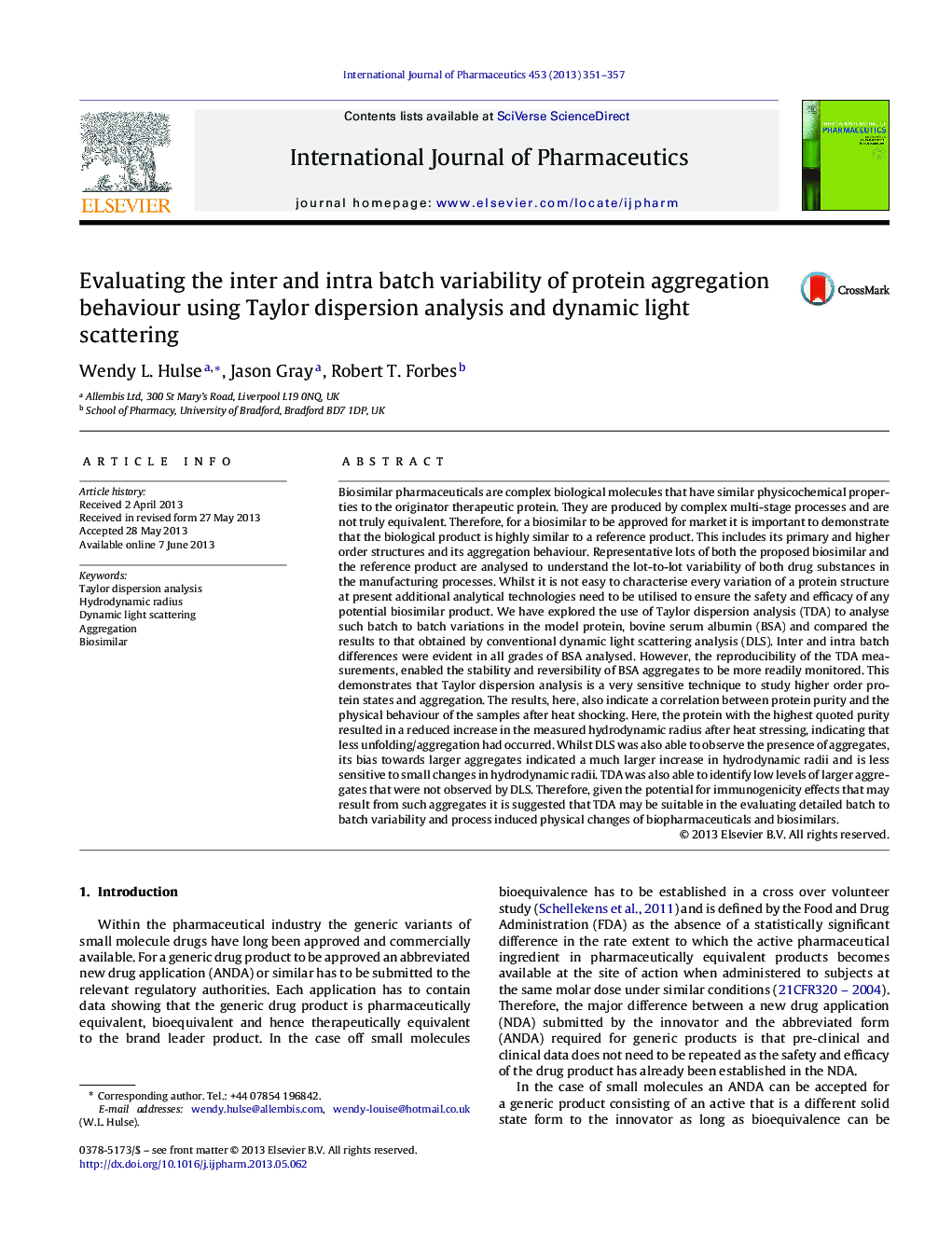| کد مقاله | کد نشریه | سال انتشار | مقاله انگلیسی | نسخه تمام متن |
|---|---|---|---|---|
| 2502182 | 1557379 | 2013 | 7 صفحه PDF | دانلود رایگان |

Biosimilar pharmaceuticals are complex biological molecules that have similar physicochemical properties to the originator therapeutic protein. They are produced by complex multi-stage processes and are not truly equivalent. Therefore, for a biosimilar to be approved for market it is important to demonstrate that the biological product is highly similar to a reference product. This includes its primary and higher order structures and its aggregation behaviour. Representative lots of both the proposed biosimilar and the reference product are analysed to understand the lot-to-lot variability of both drug substances in the manufacturing processes. Whilst it is not easy to characterise every variation of a protein structure at present additional analytical technologies need to be utilised to ensure the safety and efficacy of any potential biosimilar product. We have explored the use of Taylor dispersion analysis (TDA) to analyse such batch to batch variations in the model protein, bovine serum albumin (BSA) and compared the results to that obtained by conventional dynamic light scattering analysis (DLS). Inter and intra batch differences were evident in all grades of BSA analysed. However, the reproducibility of the TDA measurements, enabled the stability and reversibility of BSA aggregates to be more readily monitored. This demonstrates that Taylor dispersion analysis is a very sensitive technique to study higher order protein states and aggregation. The results, here, also indicate a correlation between protein purity and the physical behaviour of the samples after heat shocking. Here, the protein with the highest quoted purity resulted in a reduced increase in the measured hydrodynamic radius after heat stressing, indicating that less unfolding/aggregation had occurred. Whilst DLS was also able to observe the presence of aggregates, its bias towards larger aggregates indicated a much larger increase in hydrodynamic radii and is less sensitive to small changes in hydrodynamic radii. TDA was also able to identify low levels of larger aggregates that were not observed by DLS. Therefore, given the potential for immunogenicity effects that may result from such aggregates it is suggested that TDA may be suitable in the evaluating detailed batch to batch variability and process induced physical changes of biopharmaceuticals and biosimilars.
Detailed batch to batch variability and process induced physical changes in BSA samples were observed using Taylor dispersion analysis which were not detectable using DLS. Taylor dispersion analysis profiles for BSA (A2058, 10 mg/ml) after heat shock treatment in PBS showing first (black) and second (grey) passes through the Actipix detector highlighting pre-peaks.Figure optionsDownload high-quality image (77 K)Download as PowerPoint slide
Journal: International Journal of Pharmaceutics - Volume 453, Issue 2, 10 September 2013, Pages 351–357